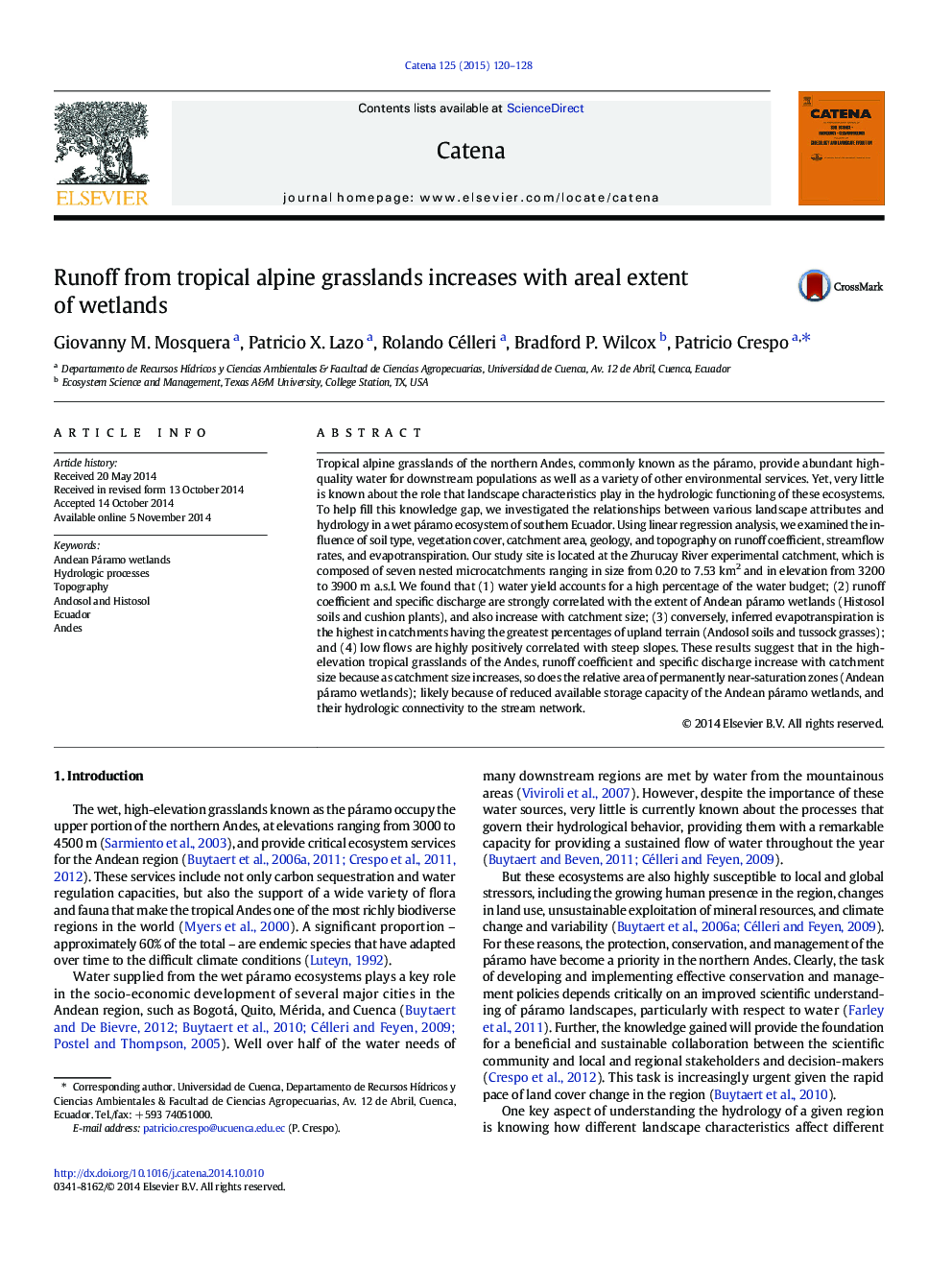| Article ID | Journal | Published Year | Pages | File Type |
|---|---|---|---|---|
| 4571284 | CATENA | 2015 | 9 Pages |
•We analyzed the influence of landscape features on water yield, streamflows, and ET.•Water yield is highest in catchments having the highest coverage of Andean wetlands.•Inferred ET is highest in catchments having the highest coverage of tussock grasses.•Catchments having higher percentages of steep slopes generated higher low flows.
Tropical alpine grasslands of the northern Andes, commonly known as the páramo, provide abundant high-quality water for downstream populations as well as a variety of other environmental services. Yet, very little is known about the role that landscape characteristics play in the hydrologic functioning of these ecosystems. To help fill this knowledge gap, we investigated the relationships between various landscape attributes and hydrology in a wet páramo ecosystem of southern Ecuador. Using linear regression analysis, we examined the influence of soil type, vegetation cover, catchment area, geology, and topography on runoff coefficient, streamflow rates, and evapotranspiration. Our study site is located at the Zhurucay River experimental catchment, which is composed of seven nested microcatchments ranging in size from 0.20 to 7.53 km2 and in elevation from 3200 to 3900 m a.s.l. We found that (1) water yield accounts for a high percentage of the water budget; (2) runoff coefficient and specific discharge are strongly correlated with the extent of Andean páramo wetlands (Histosol soils and cushion plants), and also increase with catchment size; (3) conversely, inferred evapotranspiration is the highest in catchments having the greatest percentages of upland terrain (Andosol soils and tussock grasses); and (4) low flows are highly positively correlated with steep slopes. These results suggest that in the high-elevation tropical grasslands of the Andes, runoff coefficient and specific discharge increase with catchment size because as catchment size increases, so does the relative area of permanently near-saturation zones (Andean páramo wetlands); likely because of reduced available storage capacity of the Andean páramo wetlands, and their hydrologic connectivity to the stream network.
